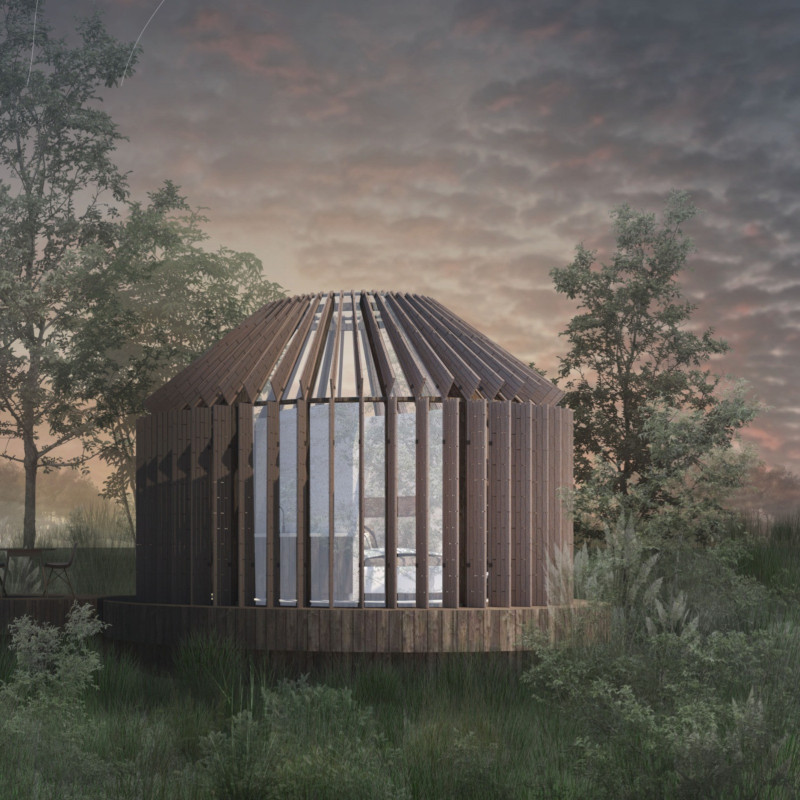5 key facts about this project
The project "Hide" serves as a modern architectural retreat, strategically situated to foster a connection with its natural environment. Designed as a cabin, it prioritizes solitude while allowing social engagement through shared spaces. The architectural concept emphasizes a round form that invites panoramic views of the surrounding landscape, creating a seamless transition between indoor and outdoor experiences.
The cabin comprises essential living areas, including a kitchen, living room, bathroom, and sleeping spaces. An emphasis on natural materials such as wood, concrete, and glass enhances both the aesthetic and functional qualities of the design. Wood forms the structural framework and the exterior cladding, providing warmth and integration with the rural setting. Concrete elements contribute to thermal efficiency, while large glass windows optimize natural light and connectivity to the landscape.
Unique Aspects of the Design
One of the distinguishing features of the "Hide" project is its circular plan. This geometry allows users to experience nature from multiple vantage points within the cabin, promoting an immersive experience. The incorporation of adjustable kinetic wings further sets this project apart. These elements not only modify natural light conditions but also enhance privacy levels, allowing for user-controlled engagement with the environment.
The pathway leading to the cabin has been thoughtfully designed to shield the structure from immediate view until one approaches, reinforcing the retreat's sense of seclusion. The use of vertical wooden slats on the exterior introduces a sculptural quality, providing dynamic shading while maintaining openness to the surroundings. This balance of form and function contributes to the overall architectural integrity of the space.
Functional Integration and Community Engagement
The "Hide" project addresses multiple functions through its design, encouraging both solitary reflection and communal interaction. While the core of the cabin is dedicated to personal living, the inclusion of shared facilities allows for social gatherings without compromising individual privacy. This dual approach promotes a sense of community while respecting the user's need for solitude.
The interior layout maximizes efficiency, with built-in furniture solutions that cater to varying needs. By minimizing unnecessary partitions, the design fosters fluid movement throughout the space. This strategic planning, combined with the ecological material selection, reflects modern architectural values that prioritize sustainability and user experience.
For more detailed insights into the architectural plans, sections, and designs of the "Hide" project, readers are encouraged to explore the project presentation. Understanding the nuances of the architectural ideas implemented here can provide a deeper appreciation for the relationship between design, function, and the natural environment.























































